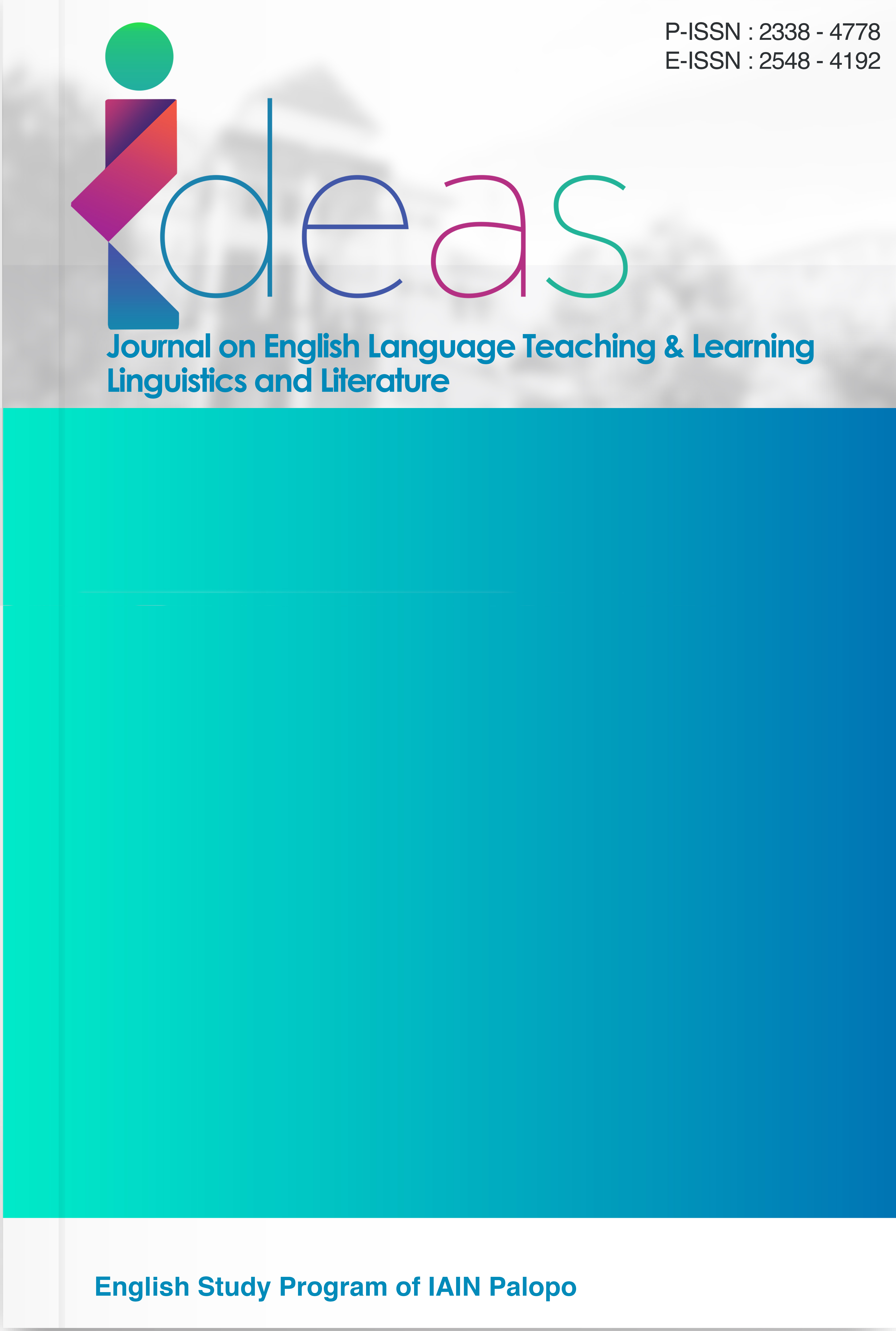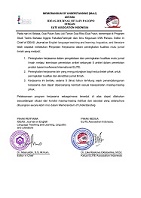Dialectic of Urban and Rural in Modern Japanese Society Portrayed on Kimi no Na Wa (Your Name) by Makoto Shinkai
DOI:
https://doi.org/10.24256/ideas.v13i2.7282Keywords:
Cultural Materialism, Urban-Rural Dialectic, Japanese Society, Kimi no Na WaAbstract
This study applies the theory of cultural materialism to explore the dialectical relationship between urban and rural life in modern Japanese society, as portrayed in Makoto Shinkai’s animated film Kimi no Na Wa (Your Name). Grounded in Marvin Harris’ theoretical framework, which emphasizes the interrelation of infrastructure, structure, and superstructure in shaping cultural expression, the research investigates how the narrative constructs, critiques, and reimagines rural-urban dynamics. Employing a descriptive qualitative approach, the study conducts content and thematic analysis of selected quotations, character dialogues, and symbolic scenes. The findings reveal that Kimi no Na Wa represents the fictional village of Itomori as a rural space rooted in spiritual continuity, familial hierarchy, and environmental constraints, while Tokyo is depicted as a technologically advanced, secular, and emotionally distant urban center. The film’s metaphysical and symbolic narrative structure critiques socio-economic disparities and the erosion of traditional values, ultimately suggesting a synthesis between rural and urban identities. The study concludes that Kimi no Na Wa serves both as a cultural mirror and critique, reflecting the shifting socio-cultural landscape of Japan through the lens of cultural materialism. The research offers a novel contribution by demonstrating how Japanese animated media can be interpreted as a site of cultural negotiation and resistance within material and ideological frameworks.
References
Aronson, B. A. (2017). The White Savior Industrial Complex: A Cultural Studies Analysis of a Teacher Educator, Savior Film, and Future Teachers. Journal of Critical Thought and Praxis, 6(3), 36–54. Retrieved from http://lib.dr.iastate.edu/jctp/vol6/iss3/
Baker, A. S. (1992). Fourth generation evaluation. In Journal of Professional Nursing (Vol. 8). Sage. https://doi.org/10.1016/8755-7223(92)90119-j
Braun, V., & Clarke, V. (2006). Using thematic analysis in psychology. Qualitative Research in Psychology, 3(2), 77–101.
Cresswell, D., & Cresswell, W. J. (2017). Research Design: Qualitative, Quantitative, and Mixed Methods Approaches. Sage Publications.
Crossman, A. (2019, October 15). Definition of Cultural Materialism.
Feldhoff, T. (2013). Shrinking communities in Japan: Community ownership of assets as a development potential for rural Japan? Urban Design International, 18, 99–109.
Harris, M. (1979). Cultural Materialism: The Struggle for a Science of Culture. In Leonardo (Vol. 16). Rowman Altamira. https://doi.org/10.2307/1575060
Hill, M. C. (2020). Japan’s 2D Trauma Culture: Defining Crisis Cinema in Post-3/11 Japan. University of South Carolina.
Hytten, K. (2006). Education for social justice: Provocations and challenges. Educational Theory, 56(2), 221–236.
Ingold, T. (2021). The perception of the environment: essays on livelihood, dwelling and skill. routledge.
Ji, N. Y. (2024). Return to the countryside: An ethnographic study of young urbanites in Japan’s shrinking regions. Journal of Rural Studies. https://doi.org/10.1016/j.jrurstud.2024.103254
Kadafi, M. (2021). Locality in Makoto Shinkai’s Kimi no Na Wa: Negotiating Japanese Youth Identity.
Karatsu, R. (2021). Rewriting 3.11 and feminization of the countryside: national discourses in Shinkai Makoto’s Your name (2016). Japanese Studies, 41(3), 273–284.
Kathy Charmaz. (2014). Constructing Grounded Theory research. NLN Publications, (15–2233), 33–59.
Li, J., & Huo, S. (2023). Literature and Modern Japanese Urbanism: Features of the Traditional Worldview in a Modern Space. Journal of Psycholinguistic Research, 52, 2339–2355. https://doi.org/10.1007/s10936-023-10004-1
Li, X., & Xiao, X. (2024). Reflection of the Japanese Consciousness and Worldview in the Context of Globalization in the Novels of Haruki Murakami. Journal of Psycholinguistic Research, 53 2, 25. https://doi.org/10.1007/s10936-024-10043-2
Manthwa, A., & Ntsoane, L. (2024). The Interplay between Hereditary Traditional Leaders, Democratically Elected Leaders and Succession: A Case Study from Makapanstad, North West Province, South Africa. Journal of African Law, 68(2), 203–214. https://doi.org/10.1017/S0021855323000347
Marzluff, J. (2006). Waiting for Wolves in Japan: An Anthropological Study of People-Wildlife Relations. In Journal of Ecological Anthropology (Vol. 10). Oxford University Press. https://doi.org/10.5038/2162-4593.10.1.8
Parvini, N. (2017). New historicism and cultural materialism. Companion to Literary Theory, 238–249. https://doi.org/10.1002/9781118958933.ch19
Selvam, M., & Mukherjee, S. (2021). CULTURAL MATERIALIST READING: VISUALIZING DOMINANT IDEOLOGIES AND DISSIDENT DISCOURSES IN THE CREATIVE GRAPHIC PANELS OF MUNNU: A BOY FROM KASHMIR. Vilnius Tech, 16(2), 624–636. https://doi.org/https://doi.org/10.3846/cs.2023.14785
Shinkai, M. (2016). Kimi no Na Wa (Your Name). New York: Yen Press, LLC.
Silverman, R. M., & Patterson, K. (2021). Qualitative research methods for community development. Routledge.
Takahashi, K. (2019). Producing Japaneseness in Everday Life: Gendered biographies, locality and community-making among Japanese women in southeast London. Goldsmiths, University of London.
Taylor, S. J., Bogdan, R., DeVault, M. L. (2015). Introduction to qualitative research methods: A guidebook and resource. John Wiley & Sons.
Teng, T. S.-H. (2022). Time, disaster, new media: Your Name as a mind-game film. New Review of Film and Television Studies, 20(4), 459–488.
Thelen, T. (2019). Disaster and Salvation in the Japanese Periphery. “The Rural” in Shinkai Makoto’s Kimi no Na Wa (Your Name). Ffk Journal, (4), 215–230. https://doi.org/10.25969/mediarep/3697
Toyoda, T., & Latz, G. (2024). Japan - Culture, Traditions, Etiquette. Britannica.
Downloads
Published
Issue
Section
Citation Check
License
Copyright (c) 2025 Varel Dava Chrisna Widya Putra Pratama, Rahayu Puji Haryanti

This work is licensed under a Creative Commons Attribution-ShareAlike 4.0 International License.
Authors retain copyright and grant the journal right of first publication with the work simultaneously licensed under an Attribution-ShareAlike 4.0 International (CC BY-SA 4.0) that allows others to share the work with an acknowledgement of the work's authorship and initial publication in this journal.
Authors are able to enter into separate, additional contractual arrangements for the non-exclusive distribution of the journal's published version of the work (e.g., post it to an institutional repository or publish it in a book), with an acknowledgement of its initial publication in this journal.
Authors are permitted and encouraged to post their work online (e.g., in institutional repositories or on their website) prior to and during the submission process, as it can lead to productive exchanges, as well as earlier and greater citation of published work (See the Effect of Open Access)




